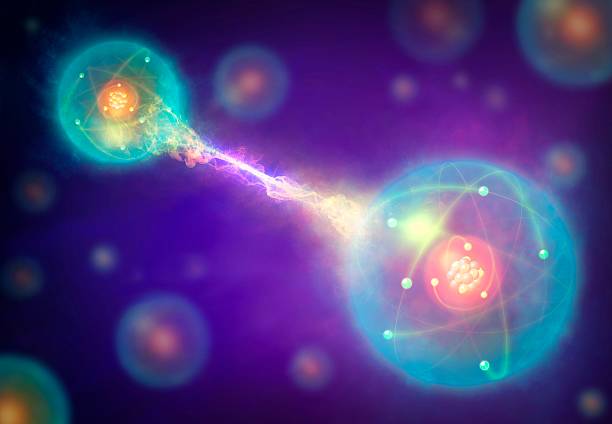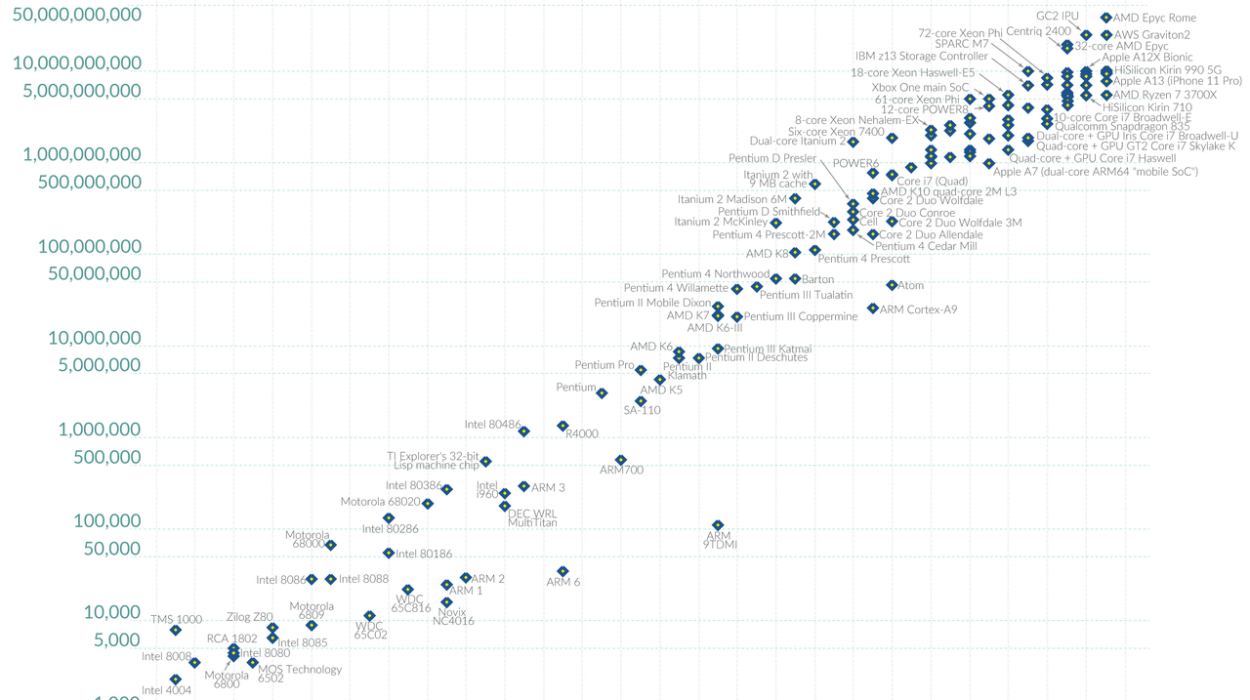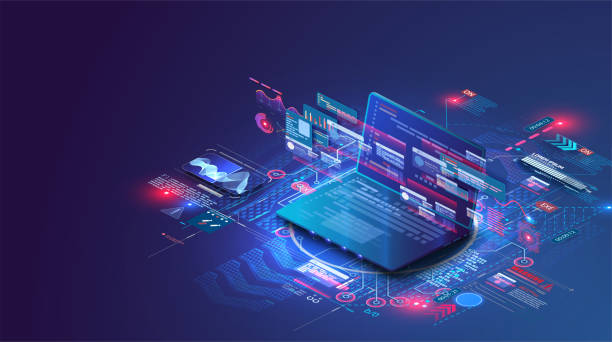Among all the mysteries that modern science has uncovered, few are as astonishing, perplexing, and profoundly beautiful as quantum entanglement. Albert Einstein once called it “spooky action at a distance,” an expression that captured both his skepticism and awe. Today, what was once a philosophical riddle is now the beating heart of one of the most revolutionary technologies ever imagined—quantum computing.
To understand entanglement is to peer into the deepest workings of the universe, where particles behave not as individual entities but as parts of an invisible whole. It is to enter a realm where logic bends, where separation loses meaning, and where reality itself seems woven together by unseen threads.
In the quantum world, everything we think we know about distance, independence, and certainty dissolves. And yet, out of this strangeness emerges a new kind of computation—one that promises to transform science, medicine, cryptography, and perhaps even our understanding of consciousness itself.
This is the story of how the universe’s most enigmatic feature, entanglement, became the key to a future that is both incomprehensible and unimaginably powerful.
The Birth of the Quantum Revolution
To appreciate entanglement and quantum computing, we must first travel back to the early 20th century—a time when physics was in crisis. Classical physics, which had explained the motion of planets, the fall of apples, and the flow of electricity, began to crumble under the weight of new discoveries.
Light, long believed to be a continuous wave, behaved in certain experiments as if it were made of discrete particles—photons. Electrons, thought to be solid particles, sometimes acted like waves, interfering and diffracting in ways that defied common sense. The atomic world seemed to obey an entirely different set of rules from the macroscopic one.
This new and unsettling domain gave rise to quantum mechanics, a theory so successful and yet so counterintuitive that even its creators struggled to believe it. The word quantum means “discrete amount,” reflecting the discovery that energy, matter, and even physical properties like angular momentum come in indivisible packets.
From this strange new framework arose an idea that would later challenge the very notion of separateness: that two particles, once connected, could remain linked across vast distances, their properties correlated instantaneously, as if space and time themselves no longer applied.
That idea—quantum entanglement—would eventually lead to one of the greatest revolutions in the history of computation.
Understanding Entanglement
Imagine two photons born together in a single burst of energy. When they are created, certain properties—such as their polarization or spin—must always add up to a fixed total. If one photon is later measured and found to have a vertical polarization, the other must instantly be horizontal, no matter how far apart they are.
This is not just coincidence. Before measurement, neither photon possesses a definite polarization; both exist in a superposition—a blend of all possible states. It is only when one is measured that the other’s state becomes defined as well, instantaneously and in perfect correlation.
Entanglement defies classical logic. It suggests that particles are not separate things moving through space, but parts of a unified quantum system. Measuring one instantly affects the other, even if they are separated by light-years. This appears to contradict relativity’s rule that no information can travel faster than light. Yet careful experiments have shown that entanglement does not transmit information in the usual sense—it is a nonlocal correlation, not a signal.
To the quantum mind, the universe is less a collection of objects than a web of relationships. Entanglement reveals that what we call “reality” may not be built from independent pieces, but from the interconnections between them.
Einstein’s Doubt and the Quantum Debate
Albert Einstein, though a founder of quantum theory, never accepted its deeper implications. With Boris Podolsky and Nathan Rosen, he published the famous EPR paradox in 1935, arguing that quantum mechanics must be incomplete. If entangled particles influenced each other instantaneously, he reasoned, then either information was traveling faster than light or each particle secretly carried “hidden variables” determining its outcomes.
For decades, this debate remained unresolved. The quantum pioneers—Niels Bohr, Werner Heisenberg, Erwin Schrödinger—insisted that entanglement was real and that the act of measurement itself shaped reality. Schrödinger even coined the term Verschränkung, or “entanglement,” to describe it.
It wasn’t until 1964 that physicist John Bell proposed an ingenious way to test Einstein’s doubts. Bell’s theorem showed that if quantum mechanics were correct, certain statistical correlations between entangled particles would exceed the limits predicted by any local hidden-variable theory. Experiments conducted in the 1970s, and more recently with overwhelming precision, confirmed that Bell’s inequalities are indeed violated.
The verdict was clear: the universe is truly nonlocal in its quantum essence. Entanglement is not an illusion—it is a fundamental feature of nature.
Superposition: The Key to Quantum Weirdness
Entanglement is only one aspect of quantum strangeness. Another is superposition—the ability of quantum systems to exist in multiple states at once.
Consider a simple analogy: in the classical world, a coin must be either heads or tails. In the quantum world, it can be both—simultaneously—until measured. This is not a trick of ignorance, but a genuine physical state described by a mathematical function known as the wavefunction.
When you measure the coin, the superposition “collapses” into one of the possible outcomes. The act of observation doesn’t merely reveal reality—it helps create it.
This ability to be in many states at once is what gives quantum computing its astonishing power. In a conventional computer, bits can only be 0 or 1. In a quantum computer, qubits—the quantum equivalents of bits—can be 0, 1, or any superposition of both. When multiple qubits become entangled, their combined states represent a vast array of possibilities simultaneously.
A classical computer must check each solution one by one; a quantum computer can explore many at once. This parallelism makes quantum computation exponentially more powerful for certain problems, such as factoring large numbers, simulating molecules, or optimizing complex systems.
From Mystery to Machine
The idea of a quantum computer first emerged in the 1980s, when physicist Richard Feynman asked a profound question: if nature itself is quantum, why not build a computer that uses the same rules? Classical computers struggle to simulate quantum systems because their complexity grows exponentially. But a machine that obeys quantum mechanics could do so naturally.
This idea led to the development of quantum information theory, a new branch of science that treats information as a physical quantity governed by quantum laws. In this framework, the basic unit of information is the qubit. Unlike a classical bit, which can only be 0 or 1, a qubit can be both—represented as a point on a sphere known as the Bloch sphere.
Quantum gates manipulate qubits through operations that rotate their states. Entanglement then links qubits together so that operations on one affect the others. Through these interactions, quantum algorithms can perform calculations that no classical computer could achieve in reasonable time.
Entanglement as a Resource
In quantum computing, entanglement is not merely a curiosity—it is a resource. It allows qubits to share information in ways that defy classical logic. When qubits are entangled, the state of the entire system cannot be described by simply listing the states of each qubit individually. Instead, the system behaves as one unified whole.
This holistic behavior is what gives quantum computers their extraordinary potential. Algorithms like Shor’s algorithm, which can factor large numbers exponentially faster than classical methods, or Grover’s algorithm, which accelerates database searches, rely on entanglement to link and process information in parallel.
In quantum communication, entanglement enables quantum teleportation—the transfer of quantum states from one particle to another, even across vast distances. This process does not move matter itself but transfers the information that defines a quantum state, effectively recreating it elsewhere. Teleportation is the foundation of emerging technologies such as quantum internet, which could enable perfectly secure communication channels.
Quantum Computing in the Real World
Turning the abstract mathematics of quantum theory into functioning hardware has proven immensely challenging. Quantum states are delicate; even the slightest disturbance from the environment—a process known as decoherence—can destroy superposition and entanglement.
To preserve quantum states, researchers must isolate qubits from noise and keep them at temperatures near absolute zero. Various physical systems are being explored as candidates for qubits: trapped ions, superconducting circuits, photons, and even defects in diamonds. Each has advantages and challenges.
Superconducting qubits, used by companies like IBM and Google, rely on tiny electrical loops cooled to near absolute zero. Ion trap qubits, used by IonQ and others, use electromagnetic fields to suspend individual atoms. Photonic qubits, meanwhile, use light particles and promise scalability through fiber optics and integrated circuits.
In 2019, Google announced it had achieved quantum supremacy, performing a calculation on its 53-qubit processor “Sycamore” that would take a classical supercomputer thousands of years. Although the result was specialized and symbolic, it demonstrated that quantum machines could outperform classical ones in specific tasks.
Since then, progress has accelerated. Governments, universities, and tech giants are investing heavily in the quantum race, developing algorithms, error-correction techniques, and hybrid systems that blend quantum and classical computation.
The Challenge of Decoherence
At the heart of every quantum computer lies a paradox. To perform useful computations, qubits must interact—but every interaction risks destroying the fragile quantum state. This is decoherence, the loss of quantum information due to interaction with the environment.
Overcoming decoherence is the greatest technical challenge in quantum computing. Quantum error correction, a complex process that encodes logical qubits in ensembles of physical qubits, offers one solution. The goal is to detect and correct errors without directly measuring—and thus collapsing—the qubits’ quantum state.
Researchers are also exploring “topological qubits,” which store information in the global properties of quantum systems rather than in local states, making them more resistant to noise. These could one day form the basis of stable, fault-tolerant quantum computers.
Quantum Communication and the Future of Security
Entanglement has not only transformed computation—it is also reshaping communication. Quantum communication exploits the laws of physics to achieve absolute security.
In quantum key distribution (QKD), two parties share entangled particles to create a cryptographic key. Any attempt to intercept or measure the particles disturbs their quantum states, revealing the eavesdropper’s presence. This principle underpins systems like China’s Micius satellite, which has already demonstrated quantum-encrypted communication over thousands of kilometers.
The eventual creation of a quantum internet—a global network of entangled nodes—could revolutionize cybersecurity, financial systems, and even cloud computing. Information transmitted through quantum channels would be invulnerable to hacking, since any observation alters the data itself.
The Quantum-Classical Divide
Despite their promise, quantum computers will not replace classical ones entirely. Instead, they will complement them. Classical computers excel at tasks requiring reliability, precision, and large-scale data handling. Quantum computers will specialize in problems involving complexity, probability, and vast parallelism.
The most exciting frontier lies in hybrid quantum computing, where classical and quantum processors work together. Classical algorithms set up the problem; quantum circuits perform the hard part—searching, optimizing, or simulating—and return results for classical analysis. This approach bridges two worlds, harnessing the best of both.
Already, hybrid systems are being tested in drug discovery, materials science, and financial modeling. Quantum simulators can model molecular interactions with unprecedented accuracy, accelerating the development of new medicines and sustainable materials. The potential impact spans industries and disciplines alike.
Quantum Entanglement Beyond Technology
Entanglement is not only a tool for computation—it is a window into the fundamental nature of reality. Experiments suggest that entanglement may be the very fabric from which space and time emerge.
In theoretical physics, researchers exploring quantum gravity and string theory have proposed that spacetime geometry itself could arise from networks of entangled quantum states. The phrase “ER = EPR,” coined by physicists Juan Maldacena and Leonard Susskind, suggests that entangled particles might be connected by microscopic wormholes—bridges in spacetime that link distant regions.
If true, entanglement may not merely connect particles—it may build the universe itself. The idea that reality is a vast quantum web implies that everything, from the smallest particle to the largest galaxy, is entangled in ways beyond imagination.
The Human Element: Thought and Reality
Quantum mechanics has long fascinated not only scientists but philosophers and artists, because it challenges the very meaning of observation and existence. The notion that the act of measurement shapes reality blurs the line between the observer and the observed.
Though quantum theory does not imply that consciousness “creates” reality, it does suggest that the universe is participatory—that events are not fixed until interactions define them. In this sense, our understanding of the cosmos becomes an active dialogue, not a passive observation.
Entanglement, in particular, resonates with the human experience of connection. Just as particles remain linked across space, so too do we find ourselves bound by invisible ties of thought, emotion, and shared destiny. Perhaps this is why the concept captures both scientific and poetic imagination—it mirrors our deepest intuition that separation is an illusion.
Quantum Computing and the Next Era of Civilization
We stand at the threshold of a technological transformation as profound as the discovery of electricity or the invention of the internet. Quantum computing could revolutionize fields from medicine to materials, from artificial intelligence to national security.
In drug discovery, quantum simulations may uncover cures for diseases once deemed incurable by modeling the precise behavior of molecules. In energy research, they could design efficient catalysts for clean fuels or superconductors that conduct electricity without loss. In cryptography, quantum computers could both break existing codes and create unbreakable ones.
But the revolution is not merely technical—it is conceptual. Quantum computing forces us to think differently about information, probability, and causality. It teaches us that knowledge need not be deterministic, that power lies not in certainty but in embracing uncertainty as a resource.
The Road Ahead
Despite breathtaking progress, the road to practical quantum computing remains long. Building scalable, fault-tolerant quantum systems will require breakthroughs in materials, engineering, and theory. The dream of millions of qubits working in harmony still lies ahead.
Yet even now, the journey is reshaping our understanding of both physics and computation. Each experiment with entanglement and superposition deepens our grasp of nature’s laws, revealing how intricately the universe encodes and processes information.
Governments, corporations, and universities are investing billions in quantum research. Quantum education is expanding, preparing a new generation to work with technologies that blur the line between science and philosophy. The coming decades may witness the birth of machines that harness the same principles that govern atoms, stars, and consciousness itself.
Entanglement: The Thread That Binds
At its core, quantum entanglement is a story about connection. It tells us that the universe is not composed of isolated pieces but of relationships—patterns of correlation that span space and time. It shows that beneath the apparent chaos lies a profound unity, a cosmic coherence woven from invisible strands of information.
Quantum computing transforms this deep truth into technology, translating the poetry of physics into practical power. It turns the strange whispers of particles into computation, into knowledge, into progress.
The implications are staggering, not only for science but for philosophy, art, and the way we see ourselves. For if entanglement teaches anything, it is that the boundaries between things are never absolute. Every interaction, every bit of information, every flicker of light and thought, participates in a greater whole.
A New Kind of Understanding
When Einstein spoke of “spooky action at a distance,” he saw paradox. Today, we see possibility. Entanglement is no longer the enemy of reason but its most wondrous ally. It has taught us that the universe, in all its vastness, is intimate—that what happens in one corner can echo in another, that knowledge and matter are intertwined.
Quantum computing, born from this insight, is more than a tool; it is a testament to human curiosity. It reflects our desire not only to understand the world but to emulate its deepest patterns—to build machines that think as nature thinks.
The quantum revolution is not the end of science but a new beginning. It invites us to imagine a future where computation mirrors the cosmos, where information flows like light, and where the boundaries of possibility expand beyond the classical horizon.
And when that future arrives, when quantum computers hum quietly in our laboratories and satellites exchange entangled photons across the stars, we will look back on this moment as the dawn of a new understanding: that in the dance of qubits and the whisper of entanglement, we have glimpsed not only the logic of the universe—but the poetry of its design.






